CD V-700 Check Sources
General
As a rule, there is a small radioactive check source on the side of each CD V-700 instrument case. The Model 3 instruments produced by Chatham Electronics and by International Pump and Machine Works are a bit of an exception in that the source is located in a small depression on the bottom of the case (see photograph at bottom of page). The purpose of the check source is to allow the user to determine if the instrument is working correctly. To perform the check, the detector’s GM probe (beta shield open) is placed against the source and the instrument response on the x10 scale is observed. If the response is between 1.5 and 2.5 mR/hr, the instrument is assumed to be operating correctly.
The CD V-700 Instruction and Maintenance Manuals produced by the various manufacturers either identify the check source as Ra D+ E or they do not identify the source at all. If the source is identified as Ra D+ E, the manual also includes a table that accounts for the decay—radium D (Pb-210) has a 22-year half-life. It should be recognize that the radionuclides identified in the manuals and the radionuclides actually used in the check sources can be two different things.
Radium D and Radium E
Radium D and radium E are the historical names that Ernest Rutherford used for lead-210 (Ra D) which has a 22-year half-life, and bismuth-210 (Ra E) which has a five-day half-life. Since lead-210 and bismuth-210 are always accompanied by polonium-210, which Rutherford called radium F, such a source is almost always described as Ra DEF. It is possible that the manuals only refer to Ra D and E because the alpha particles emitted by the Ra F cannot be detected by the probe. On the other hand, the beta particles from RaD could not be detected either because they are of too low an energy. A Ra DEF source emits two beta particles for every alpha particle. In addition to the beta and alpha particles, the Ra DEF source also emits a 46 keV gamma ray in 4% of its decays.
The Analysis of the Check Sources by Gamma Spectroscopy
For fun, I decided to identify the radionuclides used as the CD V-700 check sources via gamma spectroscopy. In gamma spectroscopy the energy of the emitted gamma rays is measured and these energies are used like a fingerprint to identify the radionuclides. The analysis was performed with a shielded high purity germanium detector. Nevertheless, I have only identified the sources on a few selected instruments and it is possible that the original sources (from the early 1960s) might have been different. The reason is that these sources were sometimes changed at the testing and calibration facilities. At one such facility, they replaced the old check sources with fragments of the sources (depleted uranium) in the CD V-787 Food and Water standards. These source change outs might have been performed because the original sources had decayed away to the point that they were no longer useful. That this decay was a problem is indicated by the fact that the State of Virginia put a sticker on their Lionel CD V-700s that indicated that the check source was decreasing with a half-life of approximately 6 years.
The results of the gamma spectroscopy analyses were somewhat surprising—none of the ten or so check sources that were identified in the instrument manuals as containing a Ra D + E sources actually did. They all contained radium-226 and its decay products: radon-222 (Rn-222), polonium-218 (Po-218), lead-214 (Pb-214), bismuth-214 (Bi-214), polonium-214 (Po-214), lead-210 (Pb-210), bismuth-210 (Bi-210) and polonium-210 (Po-210). A little explanation is required here. It is true that radium-226 sources contain Ra D and Ra E, but to say as the instrument manuals did, that the check sources used Ra D and E would mean that the Rad D predecessors (from radium-226 on down to polonium-214) were not present. The ratios of the Ra D 46 keV gamma ray intensity to the Ra-226 352 keV gamma ray intensity are the same for the check source and a pure Ra-226 source and this indicates that purified Ra D and E had not been used. The radium-226 sources that I have analyzed seem to be identifiable by their outward appearance. The bulge that they create under the source label is somewhat ill-defined and approximately 5 mm long and 2 mm across. The activities of these radium-226 check sources varied. For example, the activity of a Lionel Model 6B source was approximately 0.0004 uCi while the activity of an Anton Model 5 source was approximately 0.008 uCi.
Many of the check sources that I looked at contained depleted uranium (DU). Like the radium-226 sources, these DU sources could often be identified from their visual appearance: the edges of the sources underneath the labels were well defined and the sources appeared flat. As might be expected, the activities varied. For example, the activity of one Lionel Model 6B DU check source was approximately 0.01 uCi while the activity of a Victoreen Model 2 DU check source was approximately 0.1 uCi. An interesting aspect of DU sources is the fact that their activities will dramatically increase as the rest of the uranium decay series grows in (uranium-234 on down to polonium-210). Don't expect to see this happen, it will take a hundred thousand years or so for any increase to become noticeable.
| Model | Manufacturer | Radionuclide Identified by Gamma Spectroscopy | Radionuclide Identified in the Manual |
|---|---|---|---|
| Model 1 | Nuclear Measurements Corporation | Depleted uranium | ? |
| Model 2 | Victoreen | Depleted uranium | None identified |
| Model 3 | Depleted uranium | None identified | |
| Model 3 | International Pump | Depleted uranium | None identified |
| Model 4 | Universal Atomics | Ra-226 | None identified |
| Model 5 | Anton | Ra-226 | Ra D and E |
| Model 6 | Anton | Ra-226 | Ra D and E |
| Model 6A | Victoreen | Depleted uranium | None identified |
| Model 6B | Lionel | Ra-226 | Ra D and E |
| Model 6B | Lionel | Depleted uranium | Ra D and E |
| Model 6B | Victoreen | Depleted uranium | None identified |
Depleted Uranium
Depleted uranium consists primarily of the radionuclides uranium-238 (with a half-life of 4.5 billion years), thorium-234 (with a half-life of 24 days), and protactinium-234m (with a half-life of one minute). There is also a small quantity of uranium-235 present (about 2% of the activity of the U-238), and an even smaller quantity of uranium-234. Like a Ra DEF source, a DU source emits two beta particles for every alpha. The most prominent gamma rays emitted by DU are at 63 keV (thorium-234), 93 keV (thorium-234), 186 keV (uranium-235) and 1001 keV (protactinium-234m).
The Mystery of the Decaying Lionel Check Sources
The State of Virginia observed that their Lionel CD V-700 check sources seemed to be decaying with a half-life of approximately six years and they placed a note to that effect on the side of these instruments. The note also indicated that this decrease in activity made it difficult to check the instruments on the times ten scale. Other states (e.g., Nebraska) experienced the same problem. The only radionuclides that I can detect in these sources using gamma spectroscopy are radium-226 and its decay products. The catch is that these decay with a 1600-year half life, not a six-year half life. One possible explanation (admittedly a pure guess) is that these Lionel sources originally contained a mix of radium-228 and radium-226. The radium-228, of course, decays away with a 5.7-year half life. In the forty or so years since these sources were produced for the CD V-700s, any radium-228 that was originally present would have disappeared leaving only the radium-226.
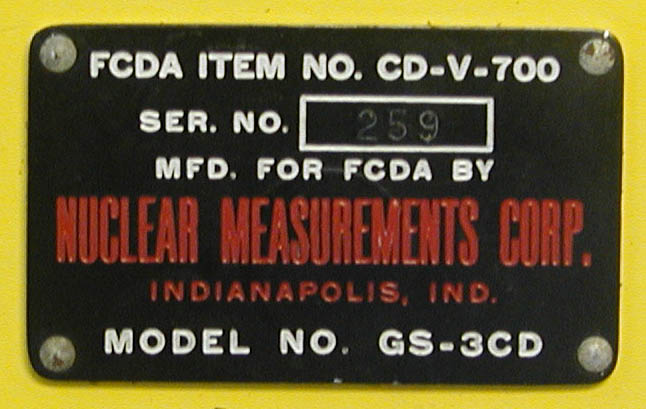
Nuclear Measurements Corporation Model 1 (DU)
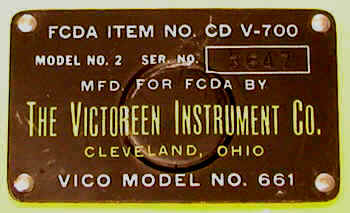
Victoreen Model 2 (DU)
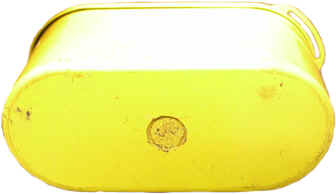
International Pump and Machine Works Model 3 (DU)
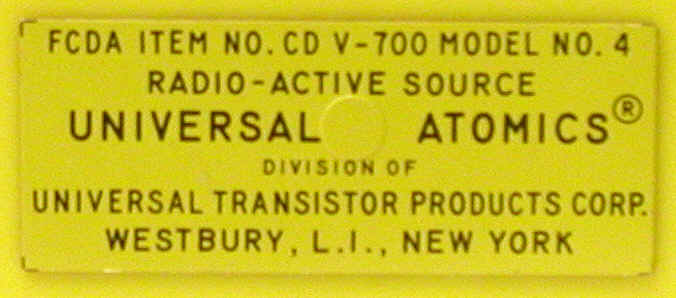
Universal Atomics Model 4 (Ra-226)
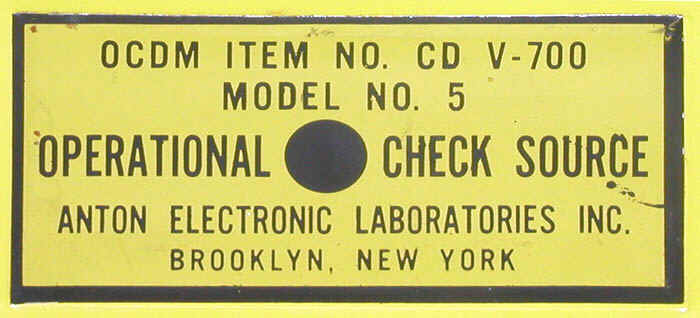
Anton Model 5 (Ra-226)
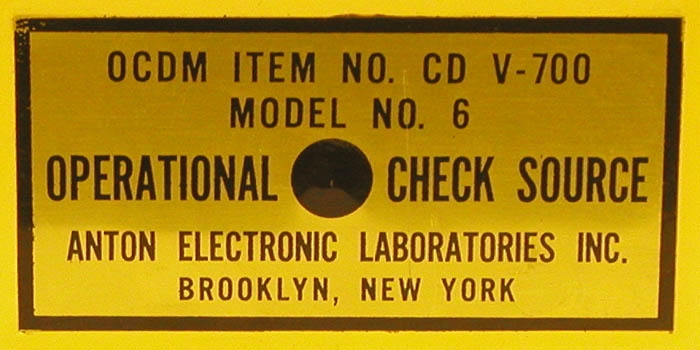
Anton Model 6 (Ra-226)
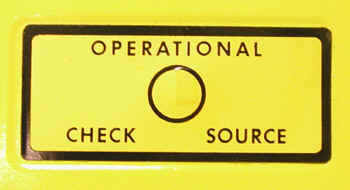
Victoreen Model 6A (DU)
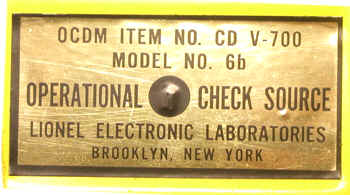
Lionel Electronic Laboratories Model 6b (DU)
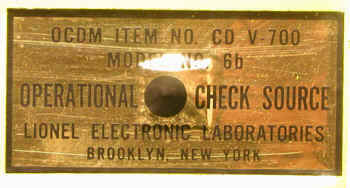
Lionel Electronic Laboratories Model 6b (Ra-226)
